STUDENTS PROJECTS
PROJECTS2013
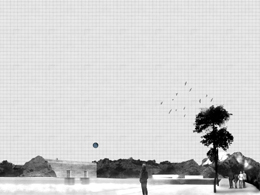
02 January, 2015
The activation of Lycabettus Hill
Highlighting the elements of hill's identity.
Students: Leventaki Marina, Michalopoulou Elisania
Supervisors: Vasilatos Panagiotis, Kourkoulas Andreas
Consultants: Manios Manolis, Tripidakis Ioannis
School of Architectural Engineering of the National Technical University of Athens
Date: 29th of July 2014
Description: The water, the view, the forest, the light and the process of ascent are the hill's elements that stay inactivated. The aim of the proposal is to highlight these elements in particular points of the hill. The identity is now visible, its significance is perceived and, in this way, the hill is activated as a center in the city of Athens.
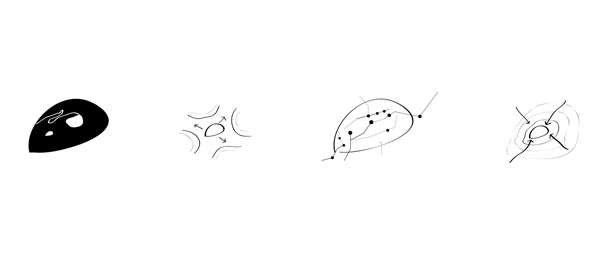
The subject of this thesis project is Lycabettus hill. The hill is located at the center of Athens. We noticed that our visits there were almost exclusively restricted at two regions. We either visited the top, around the church of Saint George or the area near Zenetos theatre, used for parking or observing the city view. The rest of the hill remained unfamiliar. We realized that we were walking towards the top, ignoring what existed at the space between. This was the initial trigger of the project.
At first, we were unable to define hill's identity. The hill is abandoned but, still has some elements that can give prominence to it. Given that they are not organized or designed, these elements just stay there inactivated.
Our proposal locates key points of the existing network of pathways of Lycabettus that have or can receive elements of the identity of the hill. We aim that the points will constitute activation points of the hill and enhance its presence in the city.
The elements that are considered to define hill's identity are:
the Water, the View, the Forest, the Light and the process of Ascent.
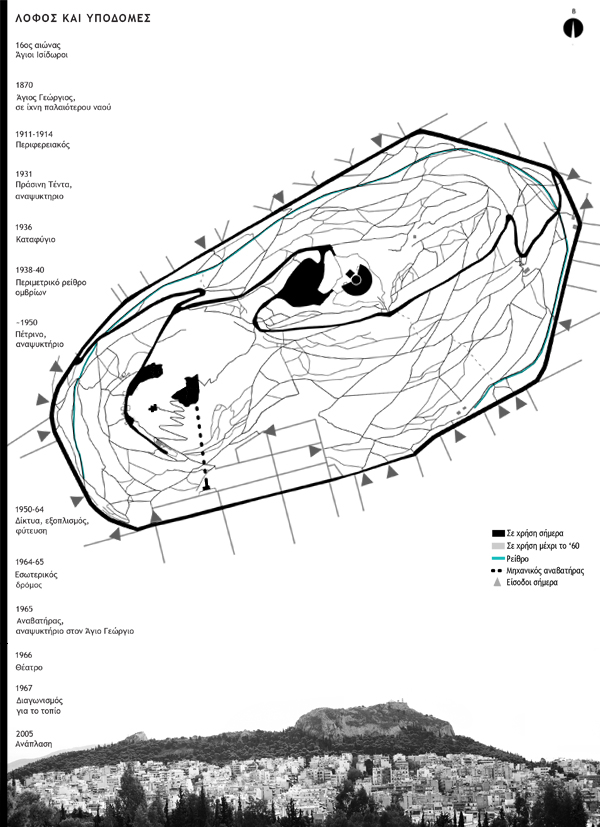
The inspiration of the five elements:
Water: Hridanos river source, the ending point of the Adrianian Aqueduct, the vision of Ernst Ziller (a recreation park for upper-class Athenians with springs, waterfalls and fountains)
View: the higher hill at the city center at 277.30m, view to the Athenian basin and towards the big mountain masses, view to Acropolis and mythological correlation.
[According to the myth, Lycabettus is a rock that was intended to be placed at the construction of Acropolis. Accidentally, it fell from Athena's hands during its transition, when she learned some bad news , at the exact point that it is located today.]
Forest: transformation of the image of the hill past the centuries. [Naked and dry_ since the ancient years, quarry during the period 1835-1960 green_ first organized reforestation in 1898]
Light: the origins of the name Lycabettus is from the words: "λύκη + βαίνω", which means dawn appears from there.
The process of Ascent: the hill is inaccessible from the city, while it is difficult to walk within its perimeter.
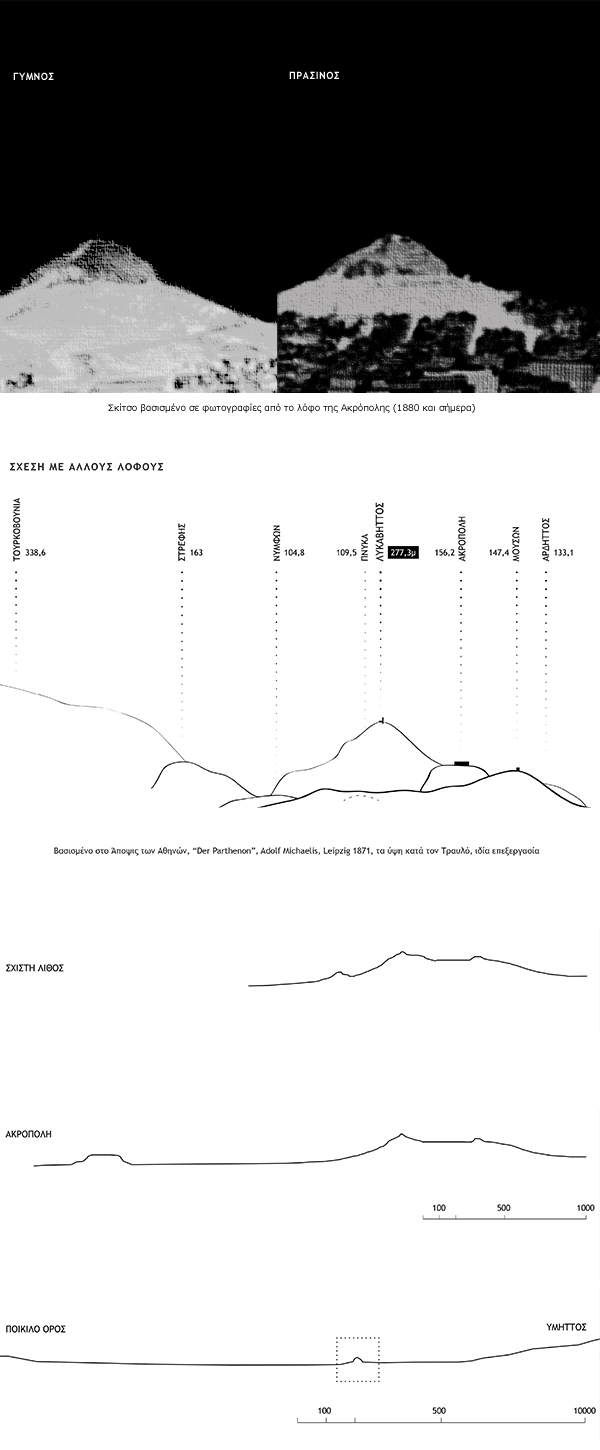
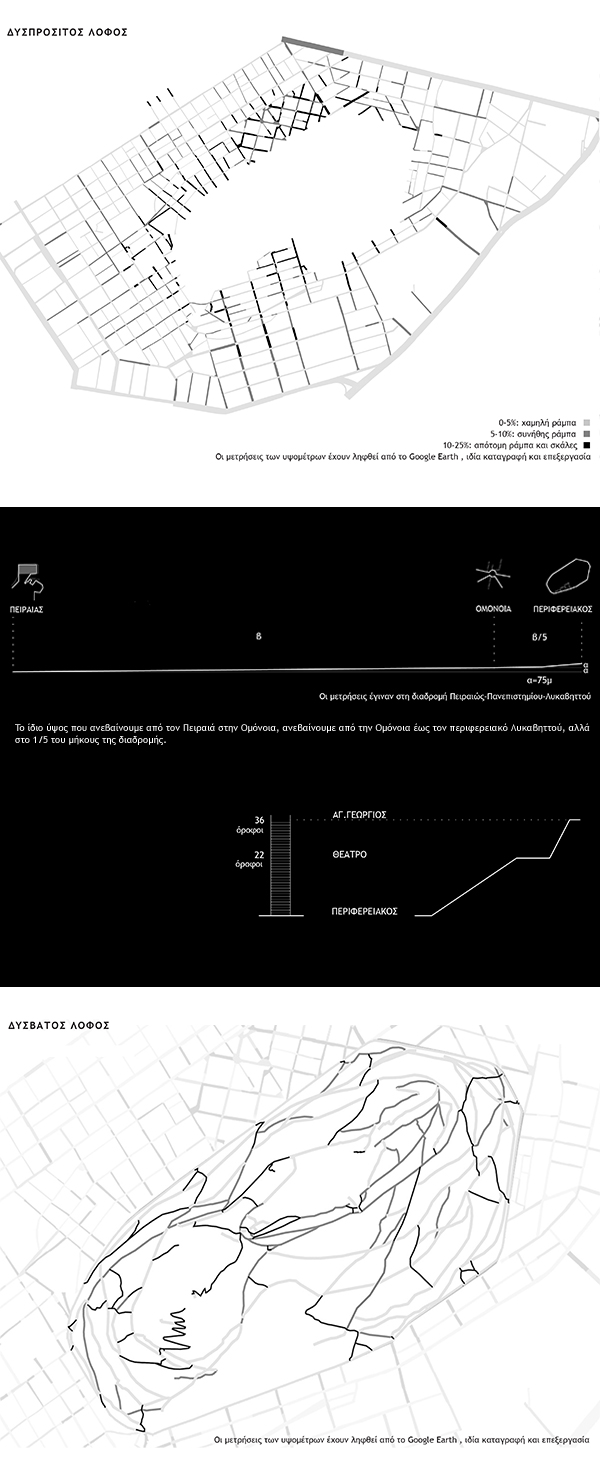
In the following video, we describe where the five elements can be located and our main ideas. The process includes image projection on a model of the hill in scale 1:750. During our final presentation the process was live.
All the points were classified in a table according to parameters related to physical characteristics, the correlation with the man and the interaction with the natural elements. So, we concluded to the original intention for each point.
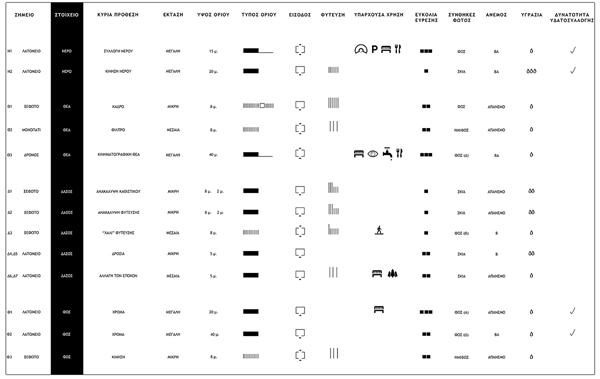
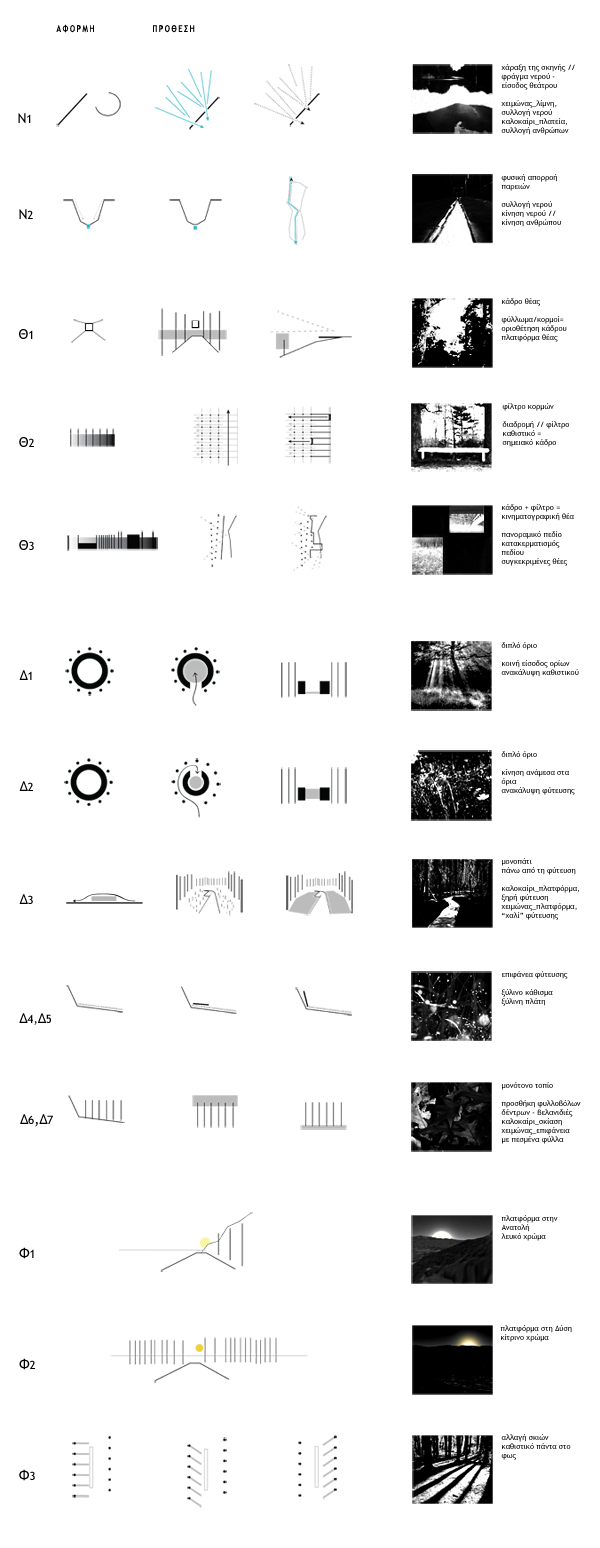
Ν2_ CANYON
The Canyon is a dead end area, former quarry, covered with dense planting of carob trees. The sides are rocky and high (18-22m). During rainfall, a large quantity of water is collected in a central natural runoff. We detected this element of the motion of the water and we decided to correlate it with the movement of people. The central drainage branches off to the sides, ensuring maximum collection of water directly from the rocky surface. Subsequently, the water is directed to an open reservoir. Along the route, one can move in relation to the water runoff, getting in touch with water spaces. At the end, the path reaches a wooden belvedere, and connects to the theatre.
Along the path there are concrete elements, consisting of materials extorted from the rocks of the site, earthen paths and visible metal pipes for water collection.
The existing planting is maintained and reinforced by other species, which serve the direction of gaze.
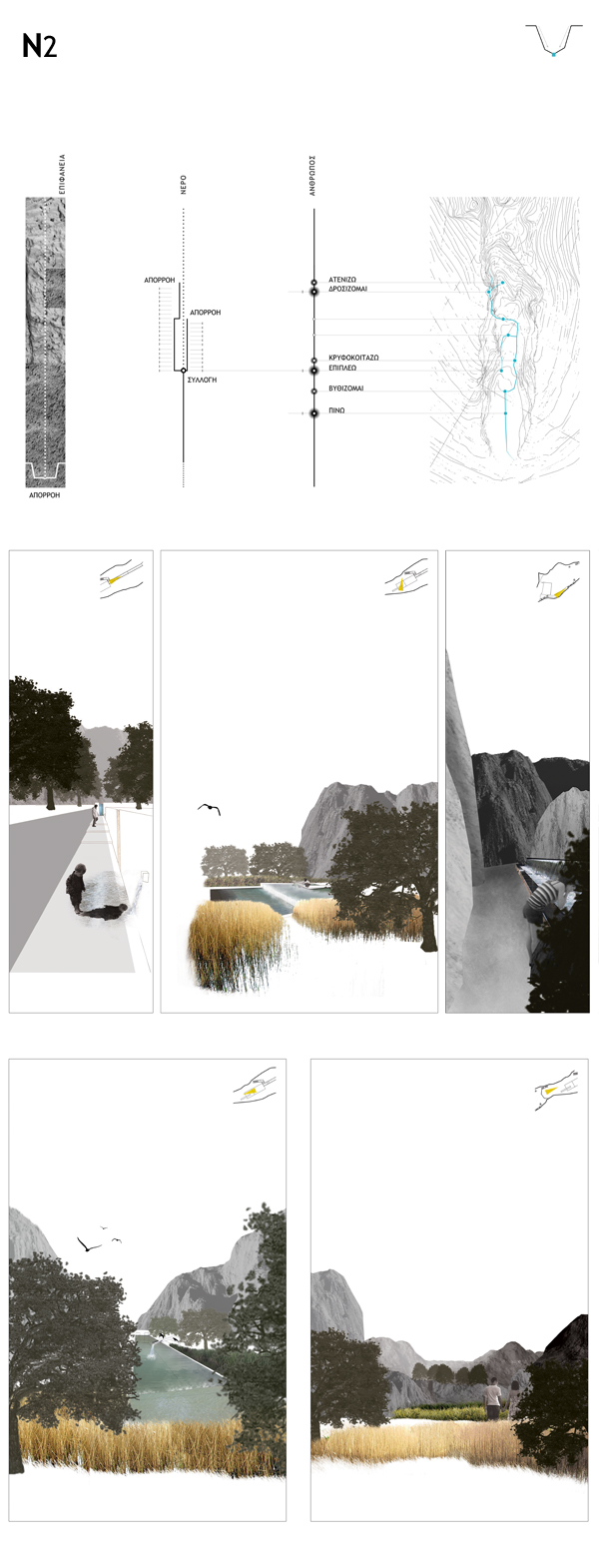
Θ3_PATHWAY OF SAINT ISIDOROI
It is a pathway in which people move along a panoramic view, viewing at first Strefi hill, and at the end the Kallimarmaro Stadium. Along this 180m route, the view remains the same, the Acropolis hill is the dominant element of the view, and it makes everything else disappear.
Our intentions is directing the gaze and guide it to other views. As a tool in this process, we use metal or concrete panels, vertical to the path and planting. The height, size and direction of the panels serve the direction of gaze. The route, from panorama becomes contiguous frames, while man can wind between the rocky surface and the forest, in two levels. All the interventions are accomplished by modifying existing infrastructure, polders or old shells.

N1_ SQUARE
It was the largest quarry of the hill. The area is perceived as a large square with a dual function, extrovert to the view and introvert to the theater.
The theater is in use only during the summer. Then the space suffocates with people, while in the winter the whole space remains empty, losing the human scale. We designed a space that changes size during the year, serving people's gathering. The tool for this is a water surface. The water replaces the human presence and vice versa.
The following video presents the function of the square during the year, starting from the early rainfalls of autumn.
The metal panel excludes the theater from the square and operates as a gate to it. The entire square functions as a water collector and conducts the water through the two doors of the panel-dam to the opening of the reservoir, behind it.
The concrete square has not a single slope, but is properly folded to define different relationships with water. The only vertical elements are the eucalyptus trees. The cafeteria was redesigned as a permanent element of the square.
Below the square, a parking lot is designed, in the old quarry's ground level. Inside the panel there is the vertical movement from the ground level to the level of the square in case of emergency, and its top functions as a belvedere.












